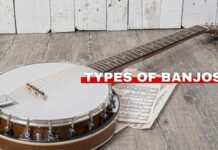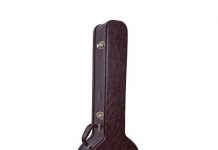The 5 string banjo is a fun instrument that is wonderful to listen to but can be complex to master. The good thing is there are six easy 5-string banjo chords. They are easy to learn and master because you don’t have to stretch your fingers too much. And, with time and practice, you can expand your playing.
How Do You Read a 5-String Banjo Chord Diagram?
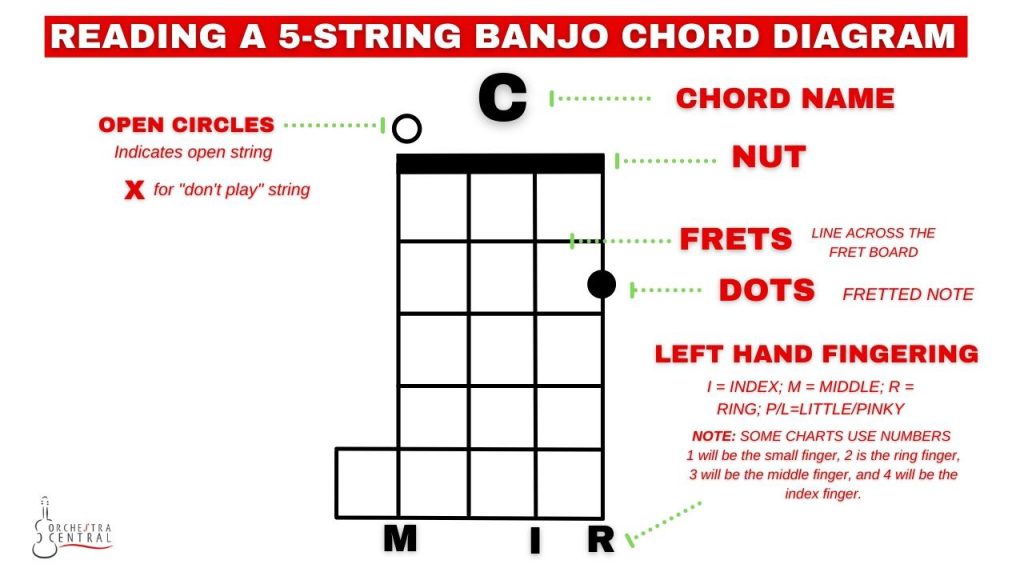
A 5-string banjo chord diagram is read from left to right so that would be 5, 4, 3, 2, and 1. In that order, the fourth string will produce the lowest sound while the fifth string produces the highest pitch.
- From left to right, the fourth string to the first strings of the banjo will be shown. The fifth string is typically not shown because you will hardly fret it.
- The top line that runs horizontally denotes the banjo nut. This nut is the equivalent of the zero fret because the strings open at this part of the neck. It also guides the strings from the fingerboard to the peghead.
- The second line is the first fret, the one below is the 2nd fret, while the one below that is the third fret, and it continues.
- The black circles that come on the upright string lines show what fret you are on and what strings you should fret. Some diagram variations include the finger number on the circle.
- The 5 string banjo chords chart will have left fingering directions at the bottom. The diagram will give the directions by either letters or numbers. If it is by letters, I the index finger, M for the middle finger, P or L for the small finger, and R is for the ring finger.
For numbers in a banjo chord diagram, 1 will be the small finger, 2 is the ring finger, 3 will be the middle finger, and number 4 will be the index finger.
Pro Tip: The finger numbers of a banjo are the exact opposite of a ukulele, wherein the pinky is four and the index is 1.
Beginner-Friendly 5 String Banjo Chords
Learning 5-string banjo chords is simpler if you start with the basics first. Here are some of the most beginner-friendly chords you can master in a week or a day!
1. G Chord
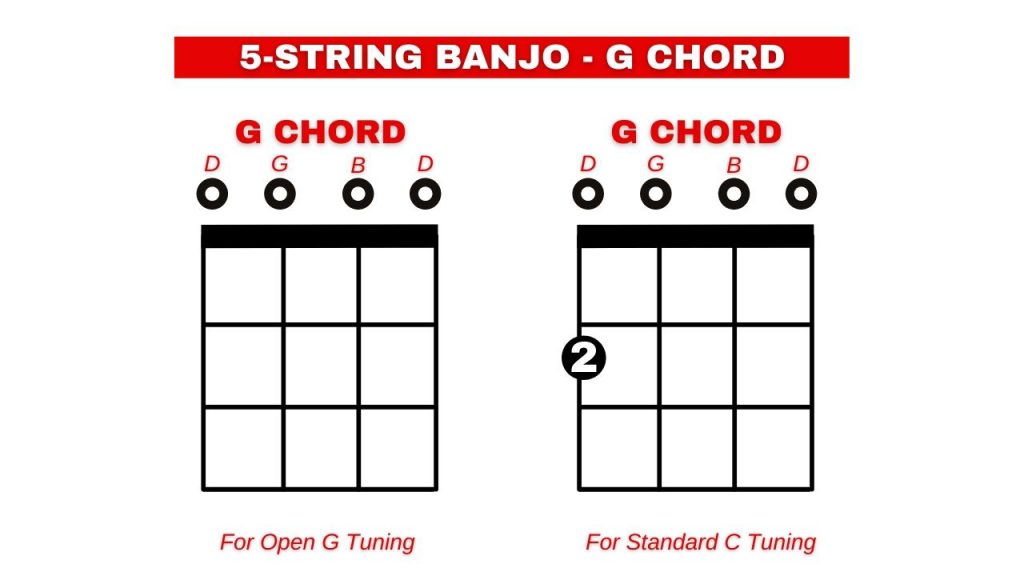
G chord, also known as G major, is the most straightforward chord to play because it does not use fingers – provided that you set your banjo to Open G tuning. You can either pluck or strum this banjo chord. If you prefer standard C tuning, don’t worry! It’s also easy – you’ll only need one finger!
2. C Chord
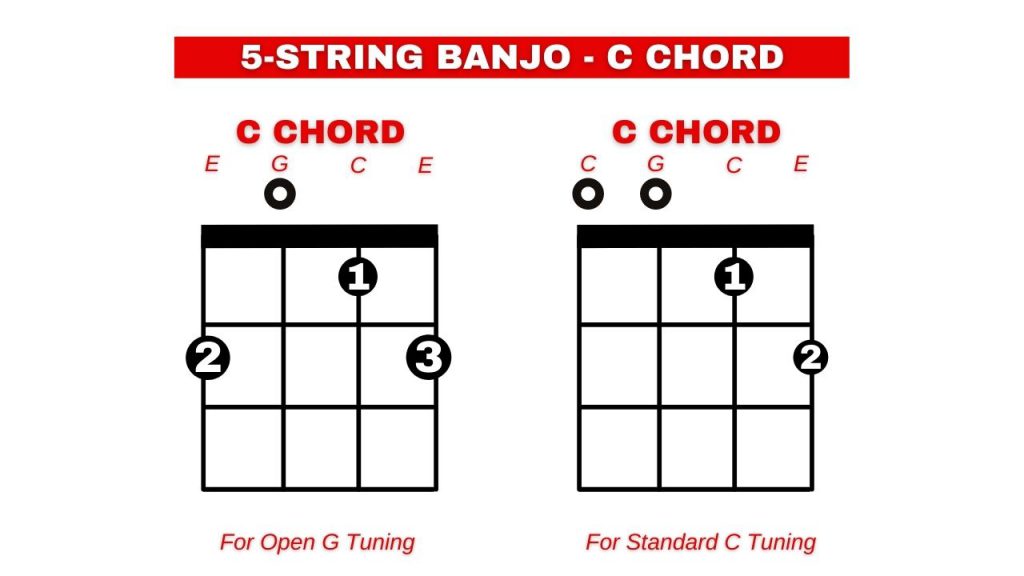
The C note on a 5 string banjo is more complex than the G, but it’s still manageable. To play the C chord, you will use three fingers. You begin by putting your index finger on the fourth string while your middle finger should be on the first fret of the second string, and your ring finger will be on the first string at the second fret.
3. D7 Chord
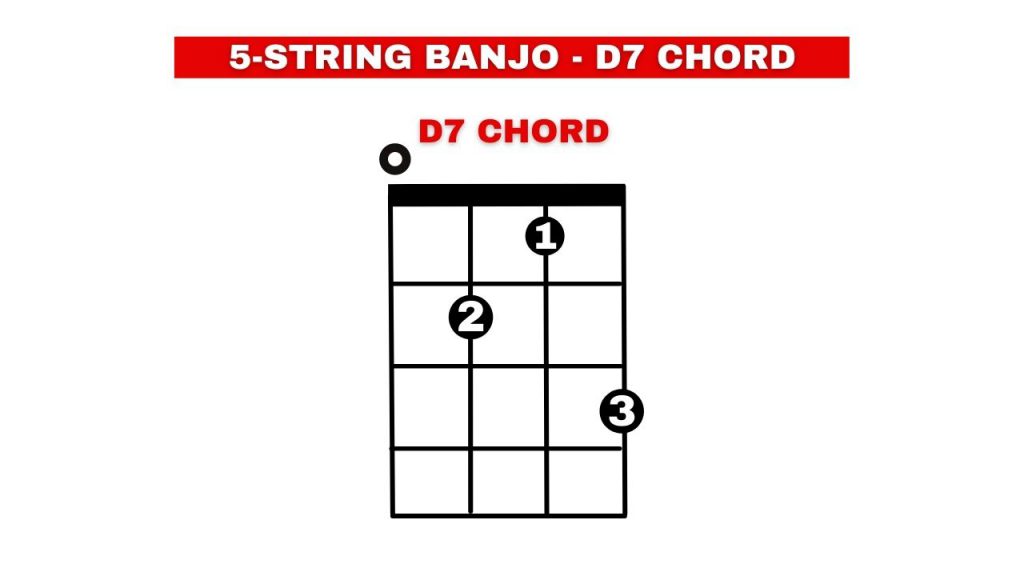
Although this chord requires three fingers to play, you can still quickly master it. We highly suggest learning the D7 chord after the C chord with Open G tuning because you’ll have to move your index and ring fingers.
4. Dm6 Chord
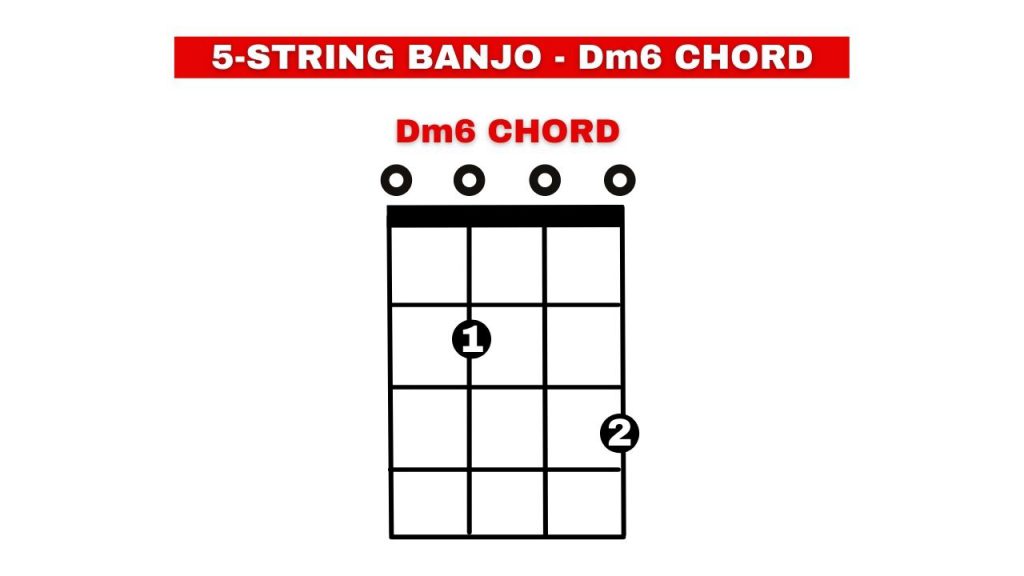
This is a two-finger chord, but there are variations. For this example, we’re using an open G tuning.
5. Em Chord
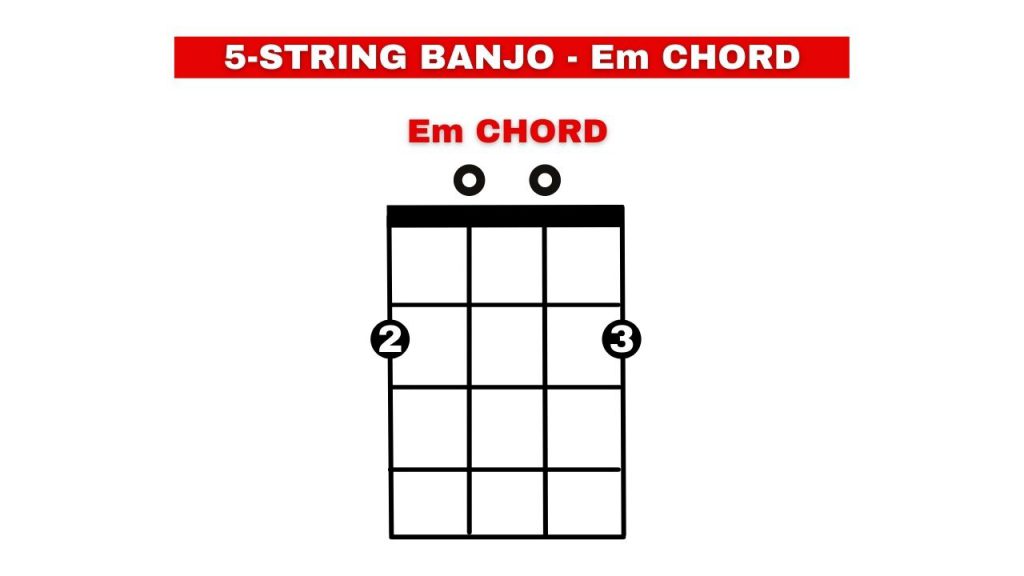
Learning the Em or E minor chord on a 5-string banjo is easier when you’re at the C chord because you’ll only have to lift your finger on the second string.
6. E7 Chord
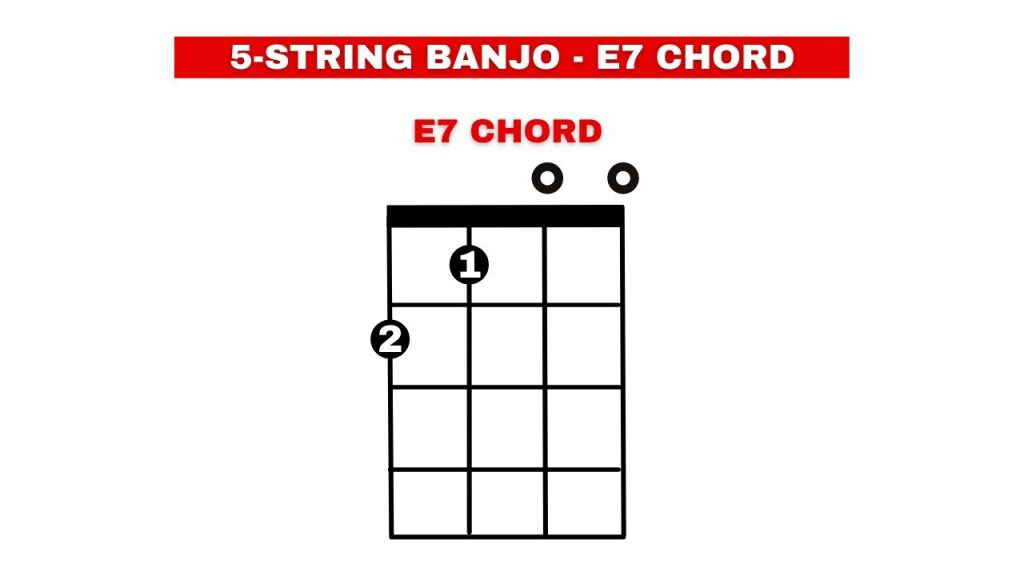
To play the E7 chord, place your index finger on the G string on the first fret, while your middle finger will go on the A string on the second fret.
What’s the Easiest 5 String Banjo Chord for You?
Learning 5 string banjo chords can be challenging, especially for beginners. Remember, increasing your chords knowledge means you’ll have more songs to play on your banjo! Hopefully, our guide will propel you to explore more chords to play.
Table of Contents


